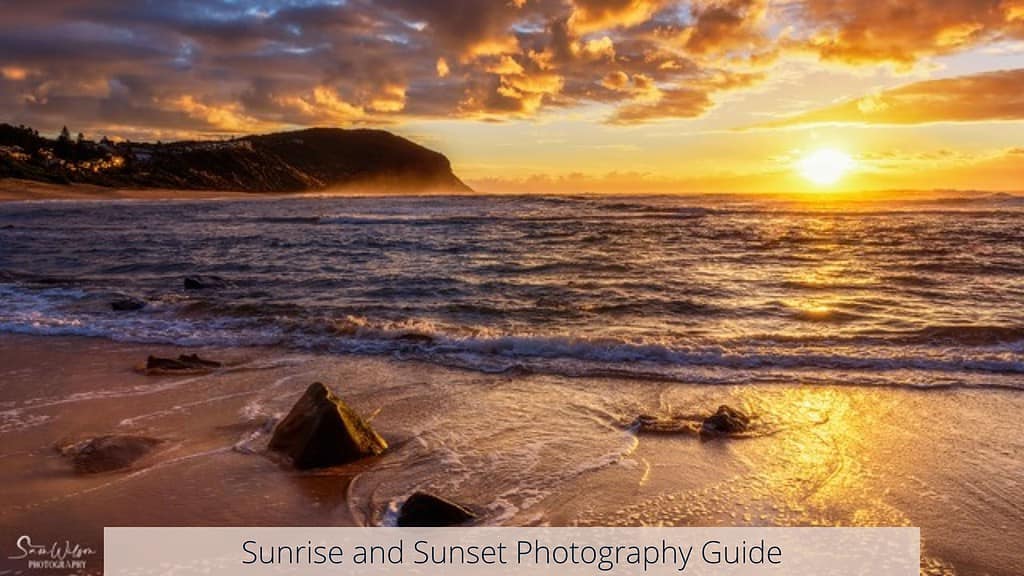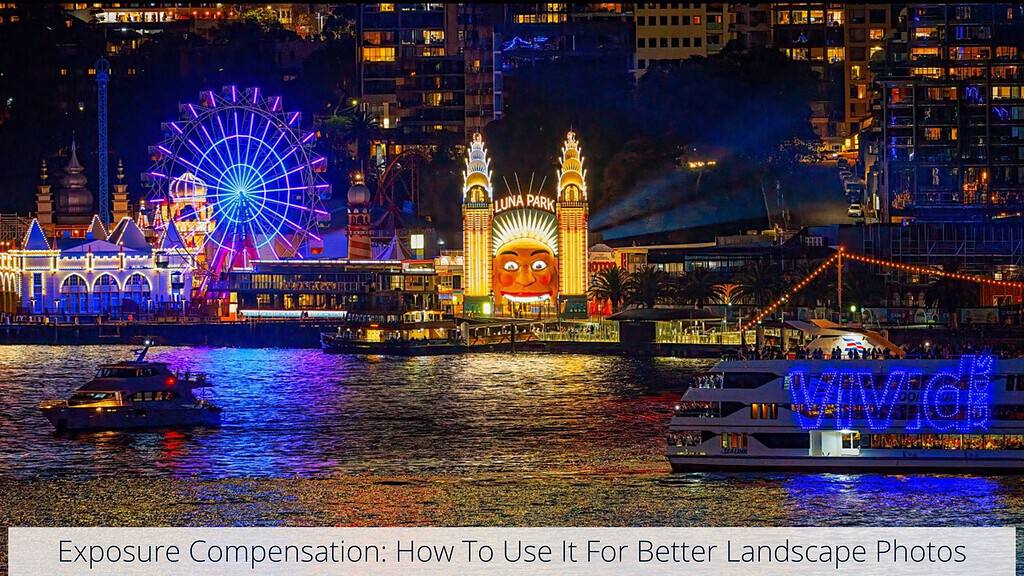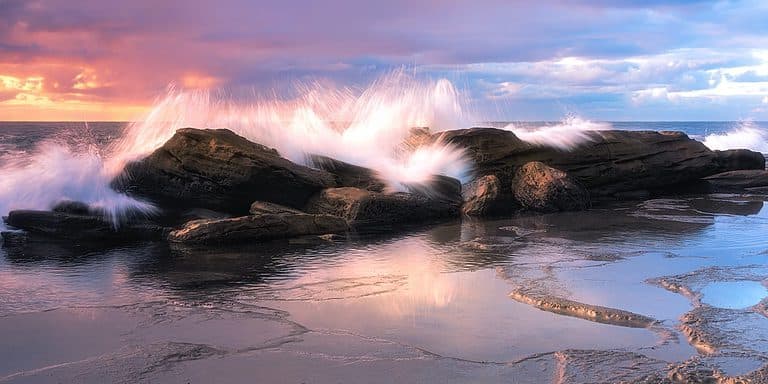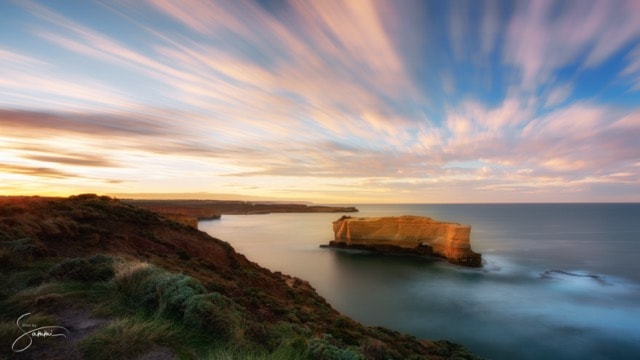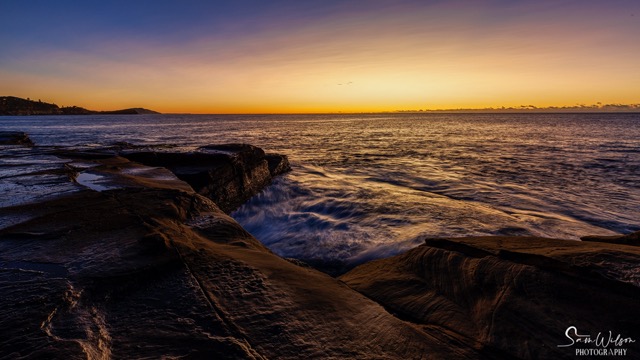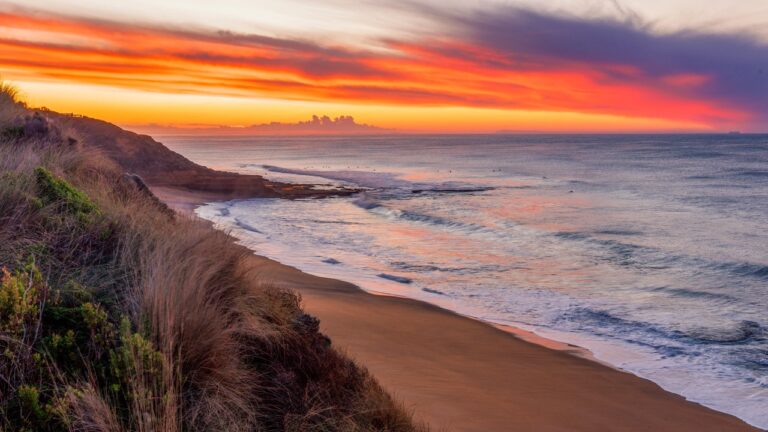Timing Your Landscape Photography: 7 Tips For Getting Great Shots
At the risk of being cliched, timing is everything and that definitely is the case with landscape photography.
The first thing that comes to mind when thinking about timing your landscape photography is probably when the light is the best, but it can be much more than that.
Golden hour is usually considered to be the best time for landscape photography because of the beautiful, diffused light that is created by the sun being low in the sky. Landscape photography can offer so much more than that though, as this article will explain.
Timing doesn’t just mean the time of day, like sunrise or sunset. Timing your landscape photography also includes many other considerations like the weather conditions, seasons of the year, special events, your subject, and even the best days.
There are also times when the timing isn’t great, so we’ll also talk about how to embrace the less than ideal times. After all, we can’t always control the situation, no matter how much we plan.
Just getting yourself to a location does not guarantee great photos. You really do need to plan ahead of time and prepare, and a lot of this does come down to timing.
I have to admit that I was completely clueless when it came to timing when I first started, so here’s what I’ve learned over the years to save you taking as long as I did to understand this.
Let’s look at the first step, planning:
Planning Your Photography Moments
It is very rare to come away with the photos you had envisioned without some kind of planning.
Whether you are travelling to a remote location, or just wanting to capture something closer to home, planning for when the conditions and situations are favourable is essential when it comes to timing your landscape photography.
I remember drooling over these beautiful colourful sunrise photos on Facebook (yes I’m that old lol) and just imagined that every sunrise or sunset must be beautiful and colourful.
Oh, so wrong – you need to have the right conditions to get those beautiful colours. So off i set to learn how to predict a good sunrise or sunset, and I discovered that there are Apps to help with this, and you have to adapt and be oh so patient!
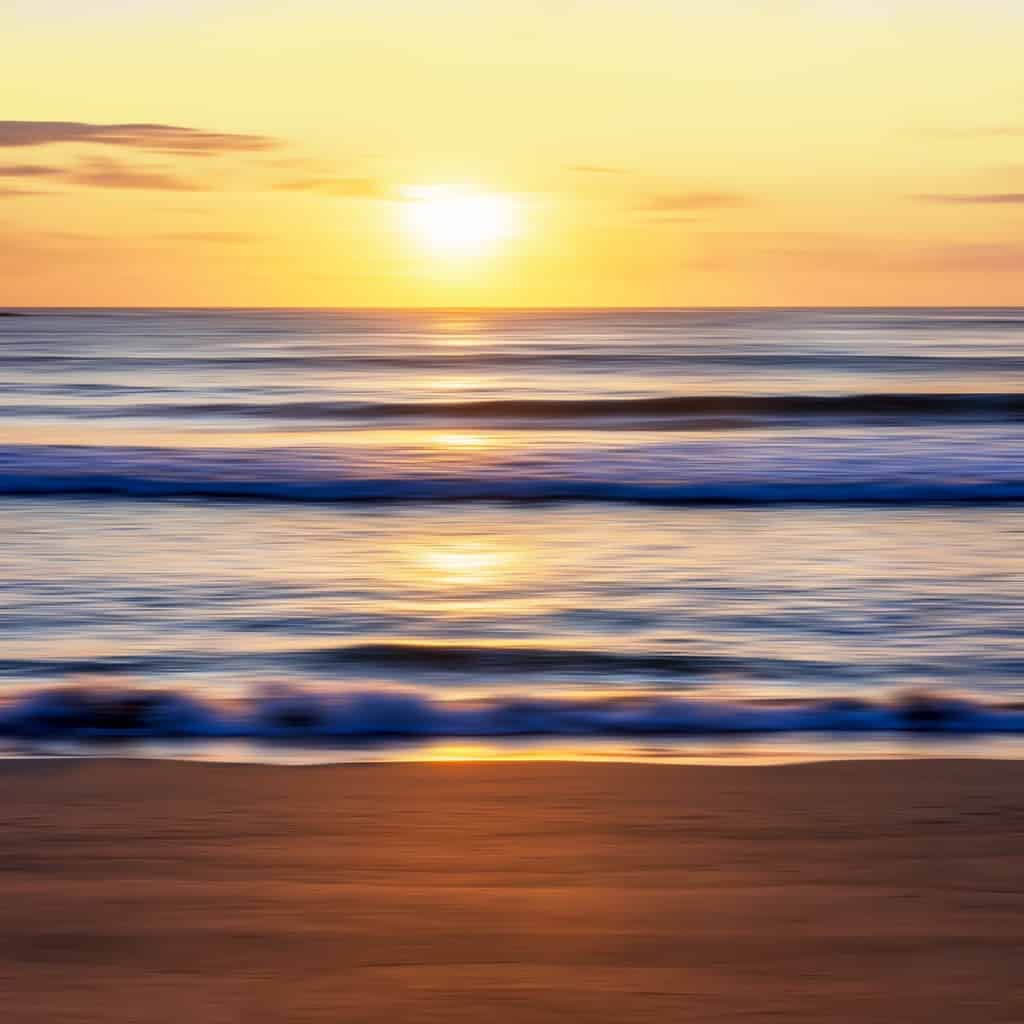
Consulting Apps
There are apps that not only help you predict the general weather and tides etc., but also those that will predict the possible cloud cover, fog, when and where the sun will rise and set.
My favourite apps for this are:
While these tools are far from perfect, they will guide you well when timing your landscape photography so that you can do your best to be at the right place at the right time.
Being Adaptable
Having just said all that, don’t just rely on these apps when planning your shoots.
I’m sure you know that the weather can be unpredictable regardless of what any forecast tells you.
I’ve been out when the conditions were supposed to be incredible only to be faced with totally boring skies. BUT, I’ve also gone out when the prediction was very ordinary only to be rewarded with epic conditions.
It really does just only take a few moments to get that great shot, and light is constantly changing.
The light can just hit something momentarily, or you get an unexpected rainbow or sunstar to make an ordinary scene simply spectacular.
You also might only be at a location once while you’re travelling so you have to make the most of what you’ve got.
Sometimes, mother nature’s surprises can provide the most memorable landscape photography opportunities.
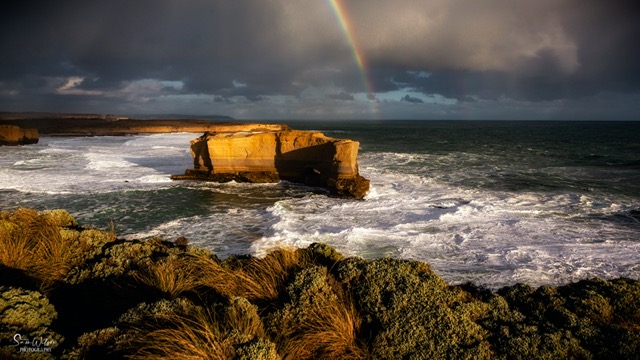
Patience Is Your Friend
This has probably been one of the hardest lessons to learn – patience is one of the really unmentioned skills of landscape photography.
Timing your landscape photography often involves waiting; sometimes you need to wait for a break in the clouds before you can capture the best light, while other times you need to arrive on location earlier or staying later than you originally planned.
Often it also just means being persistent and staying in that one spot. You may be all set up with your perfect composition lined up but the light just isn’t doing what you want. Sometimes it pays to just stick with it and that magic might just happen.
Other times it might just not happen at all and this can be tough, particularly if you’re travelling.
What I’ve learned is just to accept what it is on the day. If it’s local and you can come back, then that’s great. But if not, put the camera away and simply soak up the atmosphere – you’re out in nature and that’s always a winner.
Now to the specifics when it comes to timing your landscape photography:

Time Of Day – Understanding Natural Light
Learning to work with natural light plays a significant part in capturing stunning images.
In this section, we’ll explore the golden hour, blue hour, and transition periods, to help you make the most of the available light during your shoots.
Nothing transforms your shots as much as great light.
A fundamental element of landscape photography is understanding light, and when it is best to photograph it.
This means understanding its properties – direction, intensity, and colour – and learning how to use them to create stunning images.
When you combine this with knowing the expected conditions from your planning, you can choose the best time of the day to visit and take the photos you want to take.
The golden hour, just after sunrise, and just before sunset, is usually considered to be the best time of day for landscape photography.
During these times, the sun is low on the horizon, creating a warm, soft light that enhances colours and textures.
Blue hour, just before sunrise and just after sunset, is one of my favourite times to shoot. This is when you get those lovely cool, blue tones and soft diffused light, making it an ideal time for capturing serene landscapes, cityscapes and water scenes.
The best light for timing your landscape photography really comes down to understanding the different types of light and how they affect your photos.
Getting out there and experimenting really is the best way to learn this, and if possible start with those beautiful early morning and late afternoon opportunities.
The Role of Weather and Clouds
No it’s not as simple as just the right time of day.
The weather and clouds also play a crucial role when considering the timing of when to go out and shoot.
Understanding how different weather conditions and cloud formations affect your images can help you capture stunning landscapes.
In this section, we’ll explore the impact of sunny days, overcast days, and dynamic skies on your landscape photography.
Sunny Days
When you’re photographing landscapes on sunny days, the bright light can create vivid colours and sharp contrasts, making your images pop.
However, the light can provide really harsh shadows that are hard to manage.
Pros: Vivid colours and sharp contrast
Cons:Harsh shadows during midday and potential overexposure
Overcast Days
On overcast days, clouds act as a natural diffuser, providing soft and even lighting. This type of light is perfect for capturing details and textures in your landscape photography.
Overcast skies can also evoke moody and dramatic atmospheres. Don’t shy away from these conditions; embrace the challenge of capturing unique landscapes under grey skies.
Pros: Soft, diffused light and moody atmosphere
Cons: Lack of colour and contrast which leads to the potential for flat-looking images
Dynamic Skies
Dynamic skies, defined by a mix of clouds and clear areas, provide you with the opportunity to capture striking landscape photos.
These conditions often occur during sunrise and sunset when clouds light up with colour.
Pros: Striking, colourful skies and dramatic lighting
Cons: Unpredictable weather conditions which requires planning and patience
By understanding the effects of different weather conditions and cloud formations, you can make informed decisions about when and how to capture stunning landscape photos.
With practice and patience, you’ll soon master the art of landscape photography under various weather conditions.
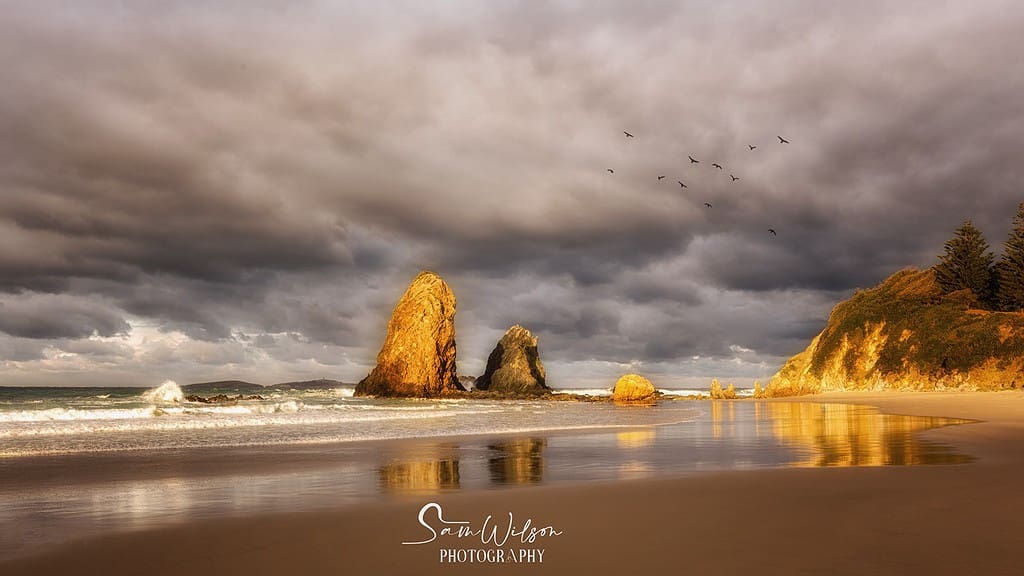
Capturing Seasonal Landscapes
The different seasons can also have a significant impact so should be considered when timing your landscape photography.
To capture the beauty of seasonal landscapes, you need to be aware of the changes that occur throughout the year.
Spring
This is a magical time of year when nature comes to life with an explosion of colour.
Capture the fresh foliage, blooming flowers and the longer daylight hours.
The golden hours during spring offer soft, diffused light which enhances the vibrancy of colours in your photos. Consider shooting during sunrise or sunset to make the most of the beautiful light.
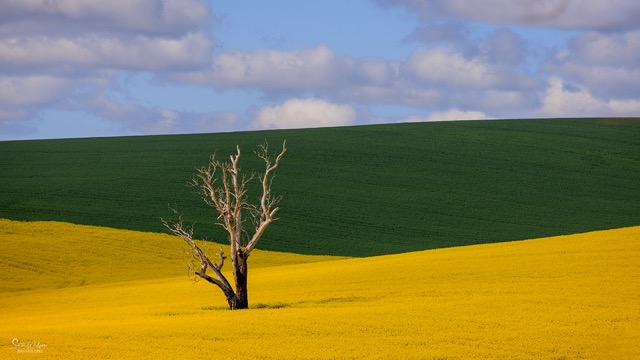
Summer
During summer, you might struggle with the harsh sunlight and extreme heat at midday, which can result in less-than-ideal landscape photographs.
To avoid this issue, focus your efforts on shooting during the sunrise or sunset, even if it means waking up early or staying out late. These times offer more pleasing light and cooler temperatures for your photography.
Early morning: Capture the warmth of the sunrise and mist or dew on the landscape.
Late evening: Document the warm hues of sunset and the long shadows that it casts.
Autumn
Autumn brings a rich tapestry of colours as leaves change from green to shades of red, orange, and yellow.
Make the most of this vibrant season by capturing the changing colours in your landscape photography.
This time of year also provides unique opportunities for photographing misty mornings and crisp, cool air, adding a touch of magic to your images.

Winter
Winter landscapes can be just as captivating as those in other seasons, offering unique opportunities to capture snow and ice.
The shorter days mean you have less daylight to work with, so shooting more sunrises and sunsets can result in dramatic, intriguing photos.
Winter is a great time to experiment with longer exposure times to capture the low light and create a sense of atmosphere.
Where I live in Australia it is not known to snow as much as many other parts of the world, but it does happen.
Winter is also known for beautiful soft light and the sunrises are that bit later, so that’s a big bonus, and worth a bit of chill. There’s always that coffee afterwards!
Best Time for Specific Landscape Scenes
Believe it or not, even the types of scenes can have an impact on timing your landscape photography.
Different subjects require different lighting conditions and times of day to capture the best shots.
Here are some tips for timing your landscape photography for specific subjects and scenes:
Mountains
When photographing mountains, make the most of the golden hours during sunrise and sunset.
During these times, the low-angle sunlight casts warm hues across the peaks, creating depth and contrast, and enhancing the textures.
You can also try capturing the blue hour for a more tranquil atmosphere.
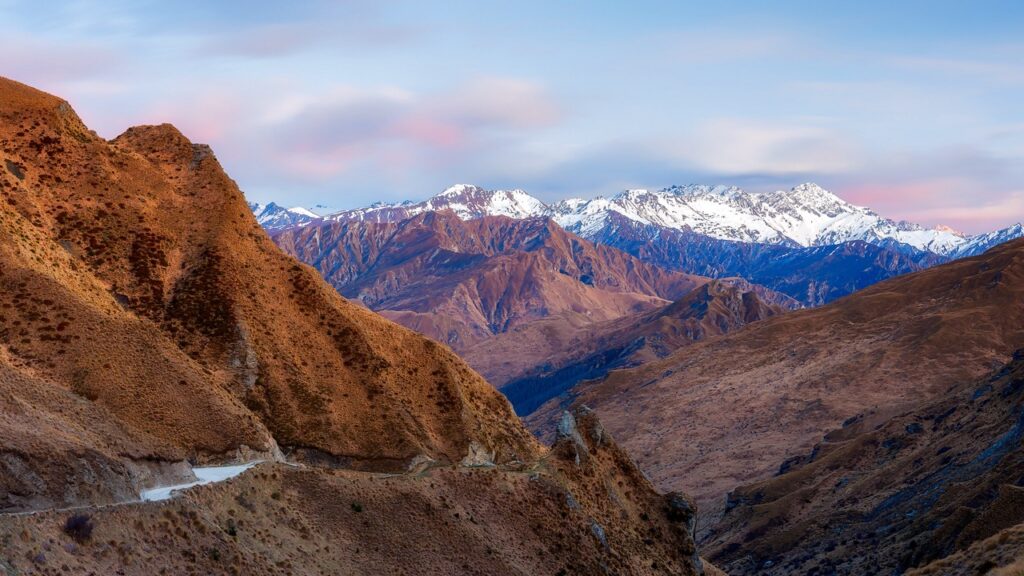
Forests
For stunning forest shots, visit during the golden hours as well.
The soft, diffused light filtering through the trees creates captivating shadows and emphasises the vibrant shades of green foliage.
If you’re aiming for a mystical mood, early morning or during light fog will create a captivating scene.
Seascapes
Beach scenes shine during the golden hours. With the sun’s soft glow reflecting on the water, you’ll capture stunning, high-contrast seascape images.
For vibrant and colourful shots, sunset is ideal as it offers an array of hues in the sky. If you want to capture a calmer scene, the blue hour after sunset provides a serene atmosphere.
Remember to have fun experimenting with different lighting conditions and make the most of each unique landscape subject you encounter.
Waterfalls
Waterfalls are captivating subjects at any time of day. However, to avoid harsh shadows and achieve a silky, smooth appearance, consider visiting on an overcast day or during the early morning or late afternoon.
Don’t forget to bring a tripod for those slow shutter speed shots.
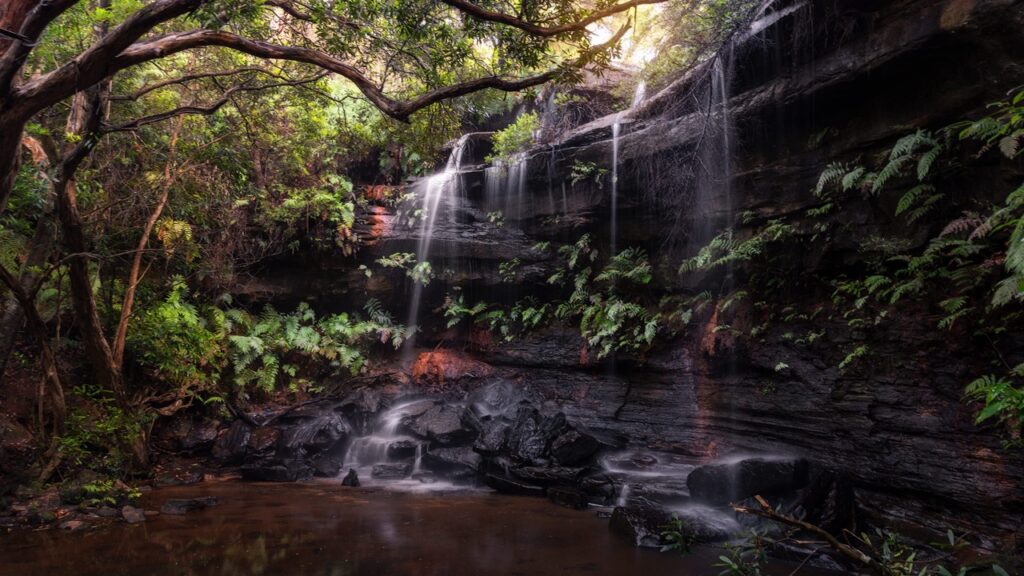
Cityscapes
Cityscapes are usually best photographed during blue hour, just before sunrise, or just after sunset.
During this time, the sky has deeper colours, which can create a beautiful contrast with the city lights.
You can also capture cityscapes during the golden hour to create more warmth and colour in your shots.
Reflections
Reflections are also better captured at sunrise as the light is clear and the wind is usually lighter, meaning that still water reflects better.
A rock pool’s water is more likely to be calm and ripple-free, and capturing reflections throughout helps the final image to be clear and still.
Whenever possible, it is best to arrive on location early in the morning to capture sunrise if you want to incorporate water reflections into your composition.
Having said that, you can get beautiful reflections at any time of the day as long as the conditions are calm.
TIP: Starbursts
If you position yourself so that the sun is partially concealed by something, or shoot when the sun is just peeking over the horizon line, set the aperture to either f/16 or f/22 and the bright light will be captured as a star.
Capturing Those Special Events
Many cities and regions all over the world have special events at various times of the year, so don’t forget to check these out when looking at timing your landscape photography.
Sydney here in Australia has an annual lighting festival called Vivid which puts on a spectacular display for a few weeks every year, and I’m sure many other countries also have similar events.
Fireworks are another fun but tricky thing to photograph. They are still on my bucket list as I’m not much of a night person, but Photography Life has written this wonderful article – How to Photograph Fireworks – Everything You Need to Know.
Astrological events such as moon cycles, meteor showers and even the northern lights also come to mind – the options truly are endless and I’m sure you can come up with a list of events that you’d love to photograph.
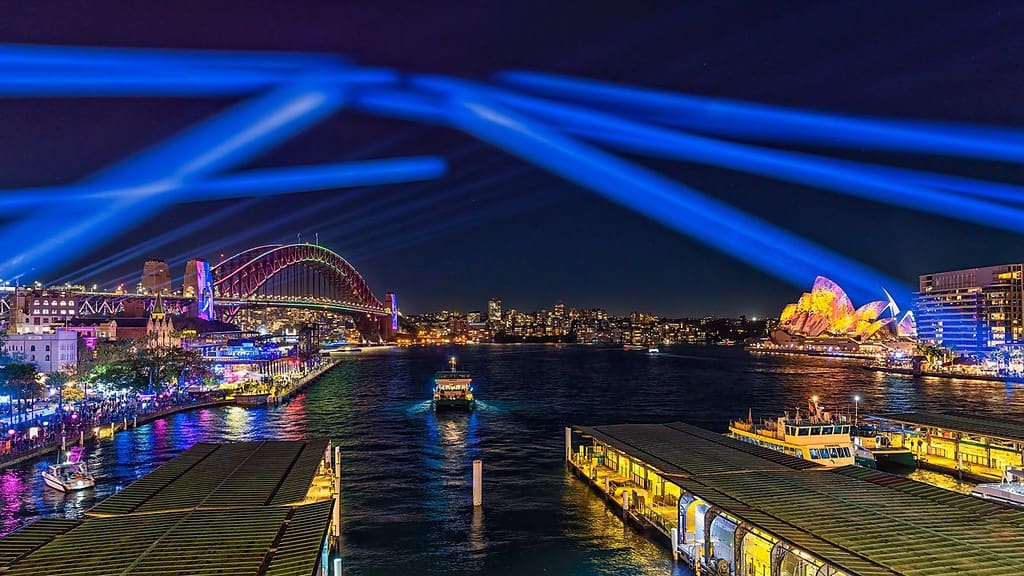
Embracing the Less Ideal Times
Finally, while early mornings and late afternoons usually make for the best lighting conditions for landscape photography, don’t be afraid to experiment with less traditional times of day.
By embracing the less ideal times, you can capture unique perspectives and develop your own photography style. Here are some strategies for shooting during the day:
- Embrace the shadows: Use them to create interesting shapes and contrast within your compositions
- Look for intricate details: Focusing on smaller features such as patterns in rocks or foliage can make for captivating images
- Get up close: Now can be a great time to look at some macro photography and consider leaving the sky out of your images altogether
- Use filters: Neutral density and polarising filters can help to reduce glare and balance out the intensity of bright light
Simply adjusting your camera settings and using exposure compensation can also help you to achieve a balanced exposure, regardless of the time of day.
Conclusion
So along with many things, there really isn’t a perfect answer or formula when it comes to timing your landscape photography.
It really depends on your goals, the scene you are capturing, and when you can practically and physically be at your location.
However, some popular times that often yield stunning results include sunrise, sunset, and twilight.
When shooting during these golden hours, you can take advantage of the soft, warm light that adds depth and dimension to your landscape images.
Keep in mind that reflections tend to be best at sunrise due to clearer light and potentially calmer wind conditions.
Remember the importance of having a focal point in your landscape compositions. This will help draw the viewer’s eye and ensure your image doesn’t appear bland or empty.
Experimenting with different times of day and weather conditions can also lead to unique and interesting results.
Lastly, always be open to trying various times of day, as different lighting conditions can lead to unexpected and captivating images.
Enjoy your photography journey, and embrace the artistic opportunities that each moment offers.
That’s it for now – Keep clicking and stay caffeinated
Like this post? PIN it so you can save it for later
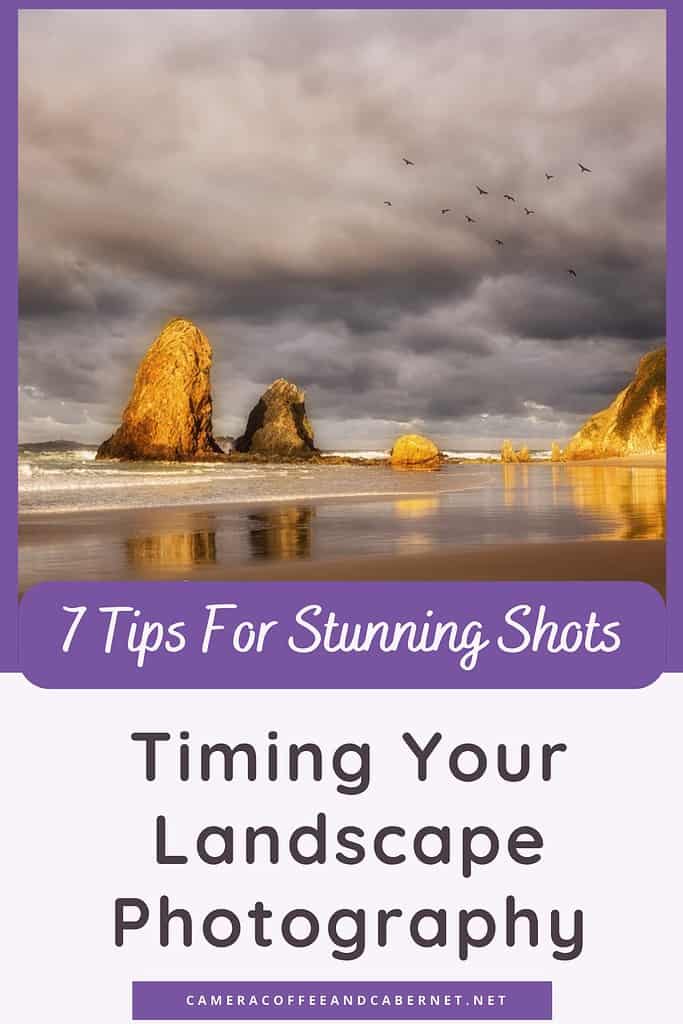
Related Posts:
- Plan Your Next Photography Shoot
- Best Apps for Planning and Scouting Landscape Photography Locations
- Sunrise and Sunset Photography Guide
- Golden Hour Landscape Photography
- Landscape Photography In The Rain
- The Importance Of Clouds In Landscape Photography
- Landscape Photography Guide
- 15 Helpful Landscape Photography Guides For Beginners
- Photographing Waterfalls: Tips For New Photographers
- How To Photograph Autumn Colors: 7 Simple Beginner Tips
Don’t miss a post – sign up Here if you haven’t already
Note – Unless otherwise stated, all photos are mine and remain my copyright images – Sam Wilson Photography.



